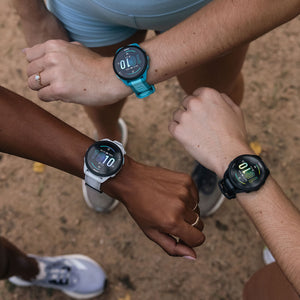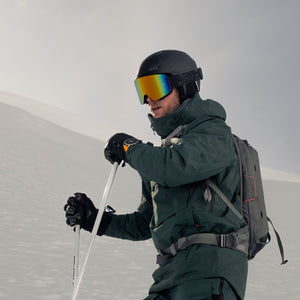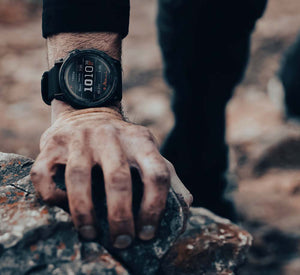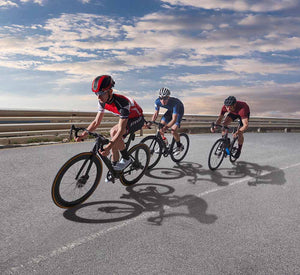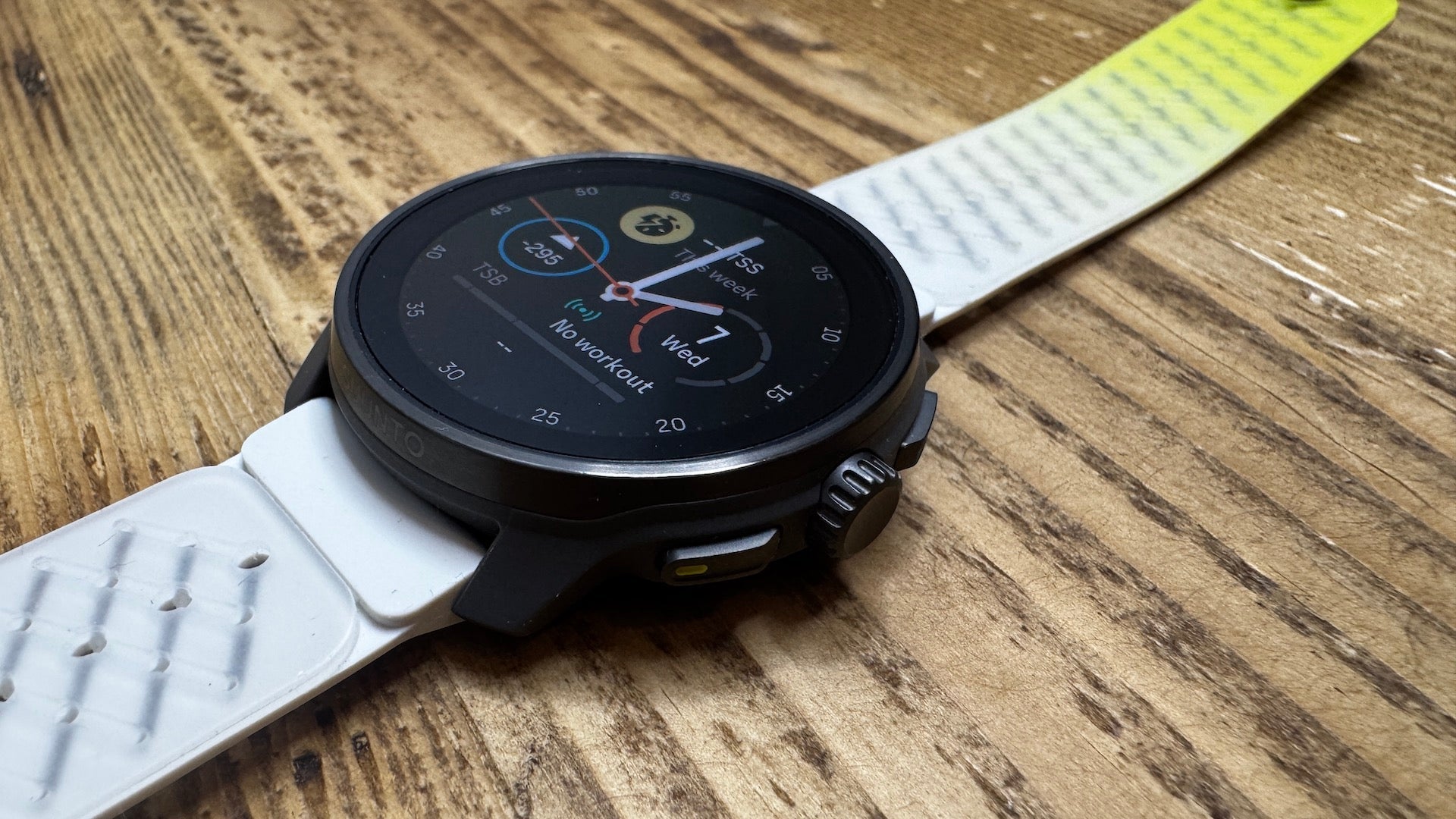
Suunto Race S Review: Suunto Shining Brighter?
Compact, capable, and competitively priced, Suunto’s Race S might just be your best-value AMOLED training partner.
Smaller, lighter, packing more features and boosted accuracy, the Suunto Race S is more than just a wrist-friendly alternative to its chunkier sibling, the Suunto Race. The Race S is a capable watch in its own right with a good balance of build quality, tracking firepower and battery life at a competitive price.
But is this new Suunto multisport watch the best budget-friendly AMOLED sports watch you can buy? I spent two months running with the Suunto Race S and Race S Titanium model to find out. Read on for the verdict in my Suunto Race S review.
Suunto Race S: An Introduction
The Suunto Race S swells the Suunto multisport watch ranks with a compact alternative to the Suunto Race. It packs a smaller AMOLED display, a 30-hour max-accuracy GPS battery life and all systems dual frequency GPS into a more compact package. There’s also new heart rate sensor tech, a snappier user interface and some welcome new adventure tools.
On paper, it’s a well-specced multisport watch with more than 95 sport modes and a strong focus on running, cycling, swimming and triathlon-tracking – as well as 0ff-grid adventures.
The Suunto Race S is among the best running watches you can buy right now. But it’s jostling for position on the increasingly competitive mid-range shelves, alongside the COROS Pace Pro, the Polar Vantage M3 and the Garmin Forerunner 265.
How I Tested the Race S
For this review, I wore the Suunto Race S Titanium model 24-7. I also spent time testing the regular Suunto Race S stainless steel. I trained with it, slept with it and put it up against the likes of the more advanced Garmin Fenix 8 AMOLED, the COROS Pace Pro, and the Polar Vantage M3. I also benchmarked the Suunto watch heart rate tracking against a Garmin HRM Pro+ chest strap.
I’ve tested the training, recovery, health and navigation features. Analyzed my training data, dug deep into the GPS tracks and the heart rate charts to see how it compares for comfort, features, accuracy and battery life.
Models, Sizes & Prices
The regular stainless steel Suunto Race S comes in one 45mm case size and seven different colours. There’s also a 45mm Titanium model with a lighter, more premium bezel. That comes in three options: A Titanium graphite, Titanium Courtney and Titanium Canaray.
At launch, the Suunto Race S price was $349. That’s the same as the COROS Pace Pro but cheaper than the Polar Vantage M4 at $399.95 and the Garmin Forerunner 265 at $449.99. Meanwhile, the more premium Suunto Race S Titanium price is $449. Though you’ll pay a little extra for the Courtney at $469.
Suunto Race vs Suunto Race S: What’s the Difference?
The biggest differences between the Suunto Race S and the Suunto Race are the size and the battery life.
The standard Race S comes in 28% lighter – 60g to the Race’s 83g. The Race S Titanium shaves more weight still, at 53g. Both Race S variants are thinner – 11.4mm with the Race at 13.3mm.
The Suunto Race has much more staying power with a GPS battery life ranging from 40 to 120 hours depending on power mode. The Race S offers 30-120 hours. Smartwatch batter is also longer on the Race with 12 days to the Race S at 9 days.
The Race S also has increased storage up from 16GB to 32GB for maps. But there are a couple of trade offs. The Race offers better water rating at 100m, compared to 50m on the Race S. The bigger Race also has a tougher sapphire crystal display. The Race S uses Gorilla Glass.
Beyond build, there’s a much improved new optical heart rate sensor that now packs double the number of LEDs. That works with new algorithms for an optical tracking package that’s a good step up from the original Race.
Suunto Race S Battery Life
On paper the Suunto Race S battery life is listed at 30 hours using the Dual Frequency GPS. That rises to 40 hours in All Systems GPS mode. You get 9 days in smartwatch mode without the Always On screen.
In testing, the Suunto Race S Titanium battery was strong. With the Always On screen switched off, in the max GPS accuracy mode, on average an hour’s run burned 4%. Meanwhile, a four-hour marathon burned 15%. If you extrapolate, that comes up a shade short of the listed 30 hours but it’s still a good performance for an AMOLED watch.
For the hourly burn it’s competitive with the Garmin Forerunner 265 at 5% per hour and the Polar Vantage M3 at 4-6%. But not quite as frugal as the COROS Pace Pro at 2%.
The Suunto Race S battery life headlines:
- A 1-hour run using Max Accuracy mode burned 4%
- A 4-hour marathon using Max Accuracy Dual Frequency mode burned 15%
- The average daytime usage with no training was around 7%
- The average overnight burn was 6%
In total, I got 7 days of general usage with 5 hours GPS training and an hour of indoor heart-rate cardio. Though you can eke out more by tweaking the settings.
Running, Fitness and Health Features
When it comes to sports tracking, health and fitness features, this new Suunto watch is pretty comprehensive and offers most of the tools you find on every Suunto GPS watch. Running, trail running, cycling and swimming are particularly well catered for. And whether you're chasing PBs or just keeping active, the Race S is well-equipped.
Runners get indoor, trail, and track modes, along with running power from the wrist. Swimmers have indoor and outdoor modes. Plus there’s triathlon mode to cater for the swim–bike-runners. So this is a good option as a triathlon watch.
When it comes to training and fitness insights, the Race S tracks key daily wellness metrics like all-day heart rate, heart rate variability (HRV), stress, sleep quality, and blood oxygen (SpO₂), to help you keep tabs on how lifestyle choices and training affect recovery.
Fitness tracking is equally comprehensive. The watch auto-tracks steps, calories burned, VO₂ max, and active minutes. Plus, it integrates seamlessly with the Suunto app for long-term trend analysis, and syncs with Strava and TrainingPeaks.
You get pretty much everything you need to train, race and recover with a slick-looking partner Suunto app that lets you chart trends and dig deeper into the details.
Suunto Race S Mapping and Navigation
The Suunto Race S offers the same advanced navigation tools you find on the pricier Suunto Race. On the whole, it’s a reliable companion for outdoor adventures and endurance training.
Alongside dual-band GNSS for superior accuracy in challenging environments like dense forests or urban canyons, you get non-routable offline mapping, turn-by-turn navigation, with real-time prompts to guide your route. There’s a handy back-to-start tool in case you go too far off track in unfamiliar terrain.
You can create custom routes in the Suunto app and we like that the Race S also supports route import from platforms like Komoot. The punchier AMOLED display also boosts the usability of the offline outdoor maps. The increased 20KM zoom limit (up from 2km) is also a great upgrade for cyclists.
You also now get a new ClimbGuide feature – Suunto’s version of Garmin’s excellent ClimbPro. Unlike ClimbPro, Suunto doesn’t yet let you see the specifics of climbs and descents up ahead on your route. Though mid-run or ride, you get a warning for the upcoming climb.
Smartwatch Tools
When it comes to smartwatch tools on sports watches, Garmin still leads the way and – like COROS and Polar – Suunto still lags behind. The Race S is also a long way off the life-taming features of a sports-friendly smartwatch like the Apple Watch Series 10 or the Apple Watch Ultra 2.
You’re limited to notifications from a paired smartphone. There’s no offline music storage or Spotify support. Just music controls. No contactless payments or voice tools either.
There’s more watch faces to choose from and some increased customization but we’re a way off Apple Watch territory.
Suunto Race S Heart Rate and GPS Accuracy
The Suunto Race S offers multiband/dual frequency GPS and an improved optical heart rate sensor and on the whole, the performance is solid.
I tested the Suunto Race S GPS accuracy and heart rate reliability against a selection of rivals, including the COROS Pace Pro and the Polar Vantage M3. I also used a Garmin HRM Pro+ chest strap and the top-tier Garmin Fenix 8 AMOLED as a benchmark.
My test runs were mainly around semi built-up urban streets with some open sky park runs and tree-covered river paths thrown in.
I switched up the power and GPS accuracy modes from the All Systems + Dual Frequency Max Accuracy, down to All Systems Only mode that, in theory, sacrifices some accuracy for staying power.
In testing, the dual frequency GPS performed well against the pricier Garmin Fenix 8. It was always within an acceptable 10% margin for error over the total distance. It stuck us to tracks with good reliability. Not 100% perfect but no more fallible than any of the other watches on test.
The heart rate is improved over the Race and a pretty familiar story for optical. Coped well on steady runs but sometimes struggled with big changes of intensity, intervals and surges.
Bottom Line: Should You Buy the Suunto Race S?
If you want a more-compact, all-round training partner with a punched-up bright AMOLED screen, good staying power and a really competitive price – compared to similarly-specced Garmins – the Suunto Race S is a good option.
If it’s not the best Suunto running watch outright, bang for buck it’s definitely the best-value Suunto running watch. Beyond Suunto’s line-up, it’s up against some stiff competition in the AMOLED space and there are some gaps that might put you off. No offline music, limited smartwatch smarts and you will have to get on with Suunto’s somewhat less intuitive UI. But if you can stomach those shortcomings, it still represents good value for money.
If you’re choosing between the Race S and the Race S Titanium, it really comes down to that little bit of weight saving and a slightly sharper look. If you’re happy to forego those, the Suunto Race S is the better value option.
If you really want offline music, the Garmin Forerunner 265 and the COROS Pace Pro both have storage and phone-free playback. However, only the Forerunner 265 plays nice with Spotify, Deezer and Co.
For anyone chasing maximum staying power from an AMOLED sports watch, the COROS Pace Pro is the way to go.
About Journalist Kieran Alger
Co-founder of The Run Testers, Kieran Alger is an experienced journalist who has spent more than a decade testing running gear. Regularly found wearing four GPS running watches at once, if it claims to make you run better or enjoy running more, he has probably tested it. He's a borderline obsessed runner with more than 50 marathon and multiple ultra finishes. In 2022, he became the first person to run Europe's river Danube from sea to source, a measly 1,830 miles in 66 days. And still had time to test running gear.
Check him out on Instagram or his YouTube Channel!

